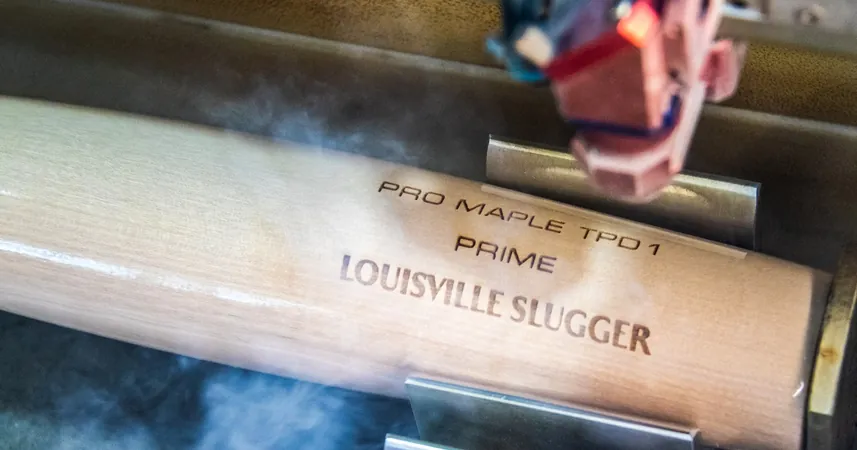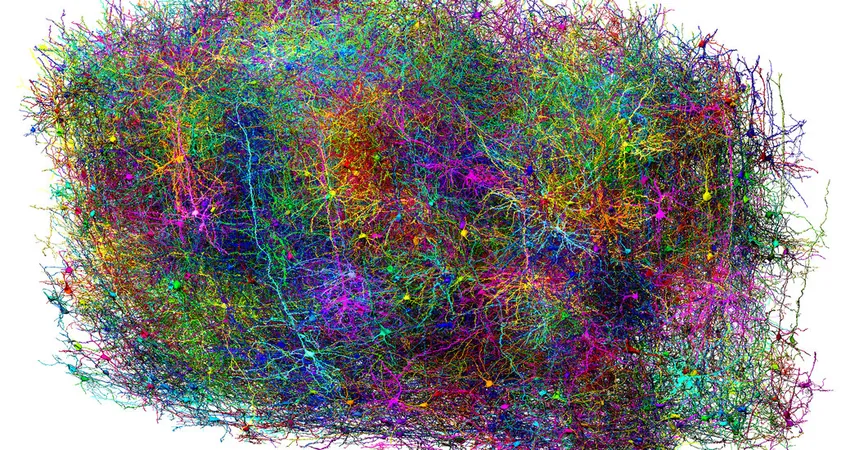
Torpedo Bats Take Baseball by Storm: The New Era of Hitting Has Arrived!
2025-04-04
Author: Ting
As the new Major League Baseball (MLB) season kicked off, baseball bat manufacturers were taken by surprise as demand for the innovative 'torpedo bats' skyrocketed. These uniquely designed bats—featuring a bowling pin shape with a thicker middle and a tapered barrel—were only recently introduced, having been developed after years of discussions between physicists and manufacturers, including Louisville Slugger.
Initially, the adoption of the torpedo bat was slow, with less than 10% of hitters using the model from Marucci Sports. However, a sudden surge in interest began after the New York Yankees made history by hitting an MLB-record 15 home runs in just three games. Notably, five of those long balls came from players utilizing the torpedo bats, which optimize hitting by adjusting the sweet spot to align more closely with where batters typically make contact.
Bobby Hillerich, a vice president at Hillerich and Bradsby Co. (the maker of Louisville Slugger), described the chaos as “crazy,” with 1,500 preorders for a product that previously had no web presence. The increase in sales was propelled when Yankees broadcaster Michael Kay discussed the bat's design on-air, generating buzz across social media platforms.
The Cincinnati Reds quickly jumped on the trend, inviting a Louisville Slugger representative to deliver samples to their stadium for star player Elly De La Cruz, who promptly used the torpedo bat to go 4-for-5, leaning into the excitement around this new technology.
In the ensuing days, the demand rapidly increased with Louisville Slugger developing around 20 different bat models to meet requests from MLB teams. By the end of the week, this number was expected to reach 70 as the frenzy continued to grow, influencing not just major leaguers but youth and collegiate leagues as well. Hillerich expressed a logistical concern about sourcing enough birch wood to fulfill the orders, noting the need for immediate action in the supply chain.
Meanwhile, Marucci, which primarily uses maple for its bats, has an advantage with its own timber company and mills, allowing it to efficiently meet demand. The company has begun marketing its torpedo models directly to the public, displaying banners on its website declaring, “The bat everyone’s talking about is here.”
Ainsworth, CEO of Marucci, sees this surge as not just a business opportunity, but a revitalization for baseball itself amidst an ongoing debate about the sport's appeal to younger audiences. As basketball and football gear up for playoff seasons, it was baseball that captured the spotlight, renewing interest in America’s pastime.
The last time baseball saw a spike like this was during the 2006 marketing of pink bats for Mother’s Day and the 2016 sales boom when the Chicago Cubs ended their 107-year World Series drought. However, the torpedo bat’s demand could have lasting implications as it signifies a shift in the culture of the sport, moving away from traditional bat designs toward innovations that leverage baseball’s scientific advancements.
The use of analytical data in crafting these bats mirrors the evolution seen in other sports, such as golf, where different clubs are utilized for varied strokes. Now, effective bat design is being tailored to optimize hitters’ performance where pitchers have taken advantage of advancements in throwing technology, creating an exciting new landscape.
Within this context, Cody Bellinger’s success using a torpedo bat only reinforces the notion that this design isn't just a fad. After hitting home runs during the explosive opening weekend for the Yankees, the buzz around the torpedo bat remains strong. As Hillerich concluded, the convergence of the Yankees’ prominence, new innovations, and batting technology has culminated in a perfect storm for the sport, promising an exhilarating era both for players and fans alike.


 Brasil (PT)
Brasil (PT)
 Canada (EN)
Canada (EN)
 Chile (ES)
Chile (ES)
 Česko (CS)
Česko (CS)
 대한민국 (KO)
대한민국 (KO)
 España (ES)
España (ES)
 France (FR)
France (FR)
 Hong Kong (EN)
Hong Kong (EN)
 Italia (IT)
Italia (IT)
 日本 (JA)
日本 (JA)
 Magyarország (HU)
Magyarország (HU)
 Norge (NO)
Norge (NO)
 Polska (PL)
Polska (PL)
 Schweiz (DE)
Schweiz (DE)
 Singapore (EN)
Singapore (EN)
 Sverige (SV)
Sverige (SV)
 Suomi (FI)
Suomi (FI)
 Türkiye (TR)
Türkiye (TR)
 الإمارات العربية المتحدة (AR)
الإمارات العربية المتحدة (AR)